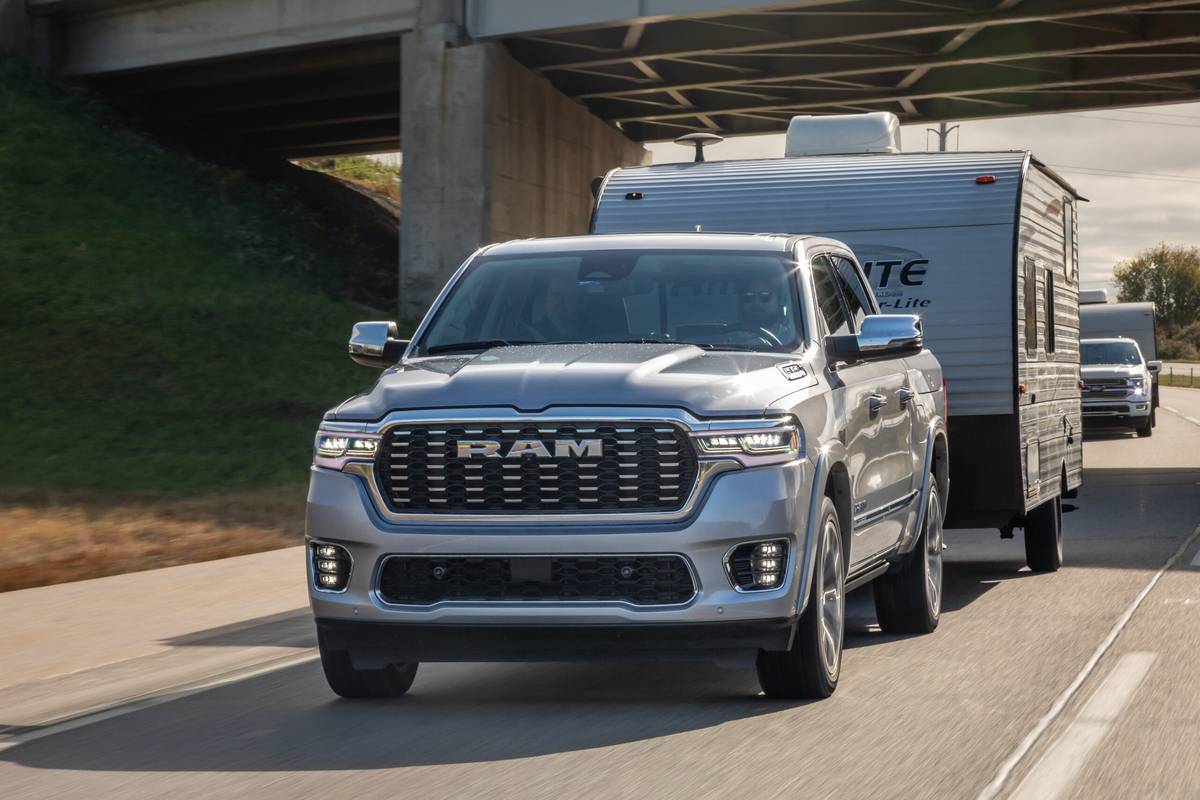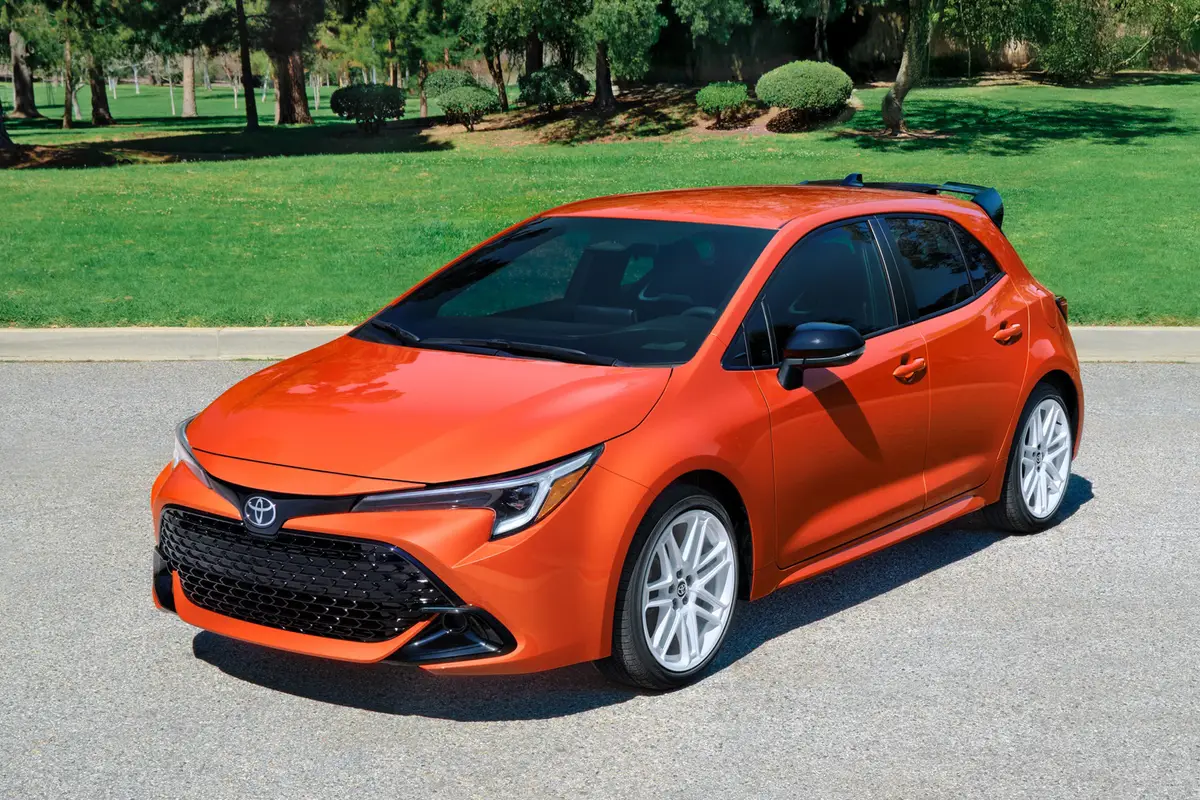Cincinnati.com's view
I thought the Catera was a dud. Apparently the marketplace did, too, because, as of the 2003 model year, we critics don’t have it to kick around any more.
An “entry-level luxury” sedan, it was Cadillac’s attempt to lure younger buyers away from sporty imports. It was based on a car produced by General Motors’ German Opel unit. Promising premise, but it lost too much in translation. Good riddance.
The next attempt is called the CTS (C-Class Touring Sedan, the three-letter designation chosen with the intended European audience in mind) and it, for the most part, is the real deal.
It’s not a BMW 5 Series, with which GM audaciously compares it, but it’s a Caddy somebody under 50 could like. It has a crispness of handling and a firmness of ride that Cadillac’s traditional, graying customers would find disconcerting.
The CTS has a standout, love-it-or-hate-it exterior design featuring lots of sculpted sharp angles which make it look like Batman’s daily ride. Be advised, though, that it does not photograph well. You’ll see when you get to the dealer’s lot – it’s not nearly so weird as it seems on the printed page, but you’ll have no trouble distinguishing it from the rest of the Cadillac stable, or for that matter from its competitors.
The CTS is offered only in one series, and it starts at 10 bucks under the magical $30K barrier, delivered. I would imagine most folks would find several thousand dollars’ worth of add-on goodies irresistible, although the car is quite respectably outfitted in dead-stock trim.
It has leather seating and a power-adjustable driver’s seat, a 7-speaker AM-FM-cassette-CD rig, fog lamps, six air bags, remote keyless entry, GM’s OnStar system, 16-inch alloy wheels and all the expected goodies.
The biggest surprise: the standard transmission is a five-speed manual Getrag (a renowned German supplier). Caddy? Manual? Wow, they are changing. I suspect, however, that most luxury buyers will pop for the 5-speed automatic instead – what’s another $1,200?
Another surprise is that the CTS is rear-wheel-drive. This makes for better handling at the expense of packaging efficiency, which shows where the designers’ heads were.
The Getrag unit was pretty good; it didn’t throw me any curves when I was rapidly moving through the gears, either up or down, and the clutch was easily feathered. It just didn’t offer quite the degree of precision feel that would make me want to work that hard, despite its rod-type linkage. Especially since the available automatic IS a five-speed, which should work very nicely with the engine supplied in the CTS.
The fun maker is a 3.2-liter double-overhead-cam derivative of Catera’s 3.0-liter mill, with an aluminum cylinder head and cast iron (this is entry-level) block. It produces 220 hp at a lofty 6,000 rpm. Torque peak is at 3,400 – 220 foot-pounds. Curb weight of the CTS is 3,509 with the manual trans. Not too bad for a midsize car, and with the power available, good for 7-second 0-60 times, well within the expected range for its type.
EPA ratings are 19 mpg city, 26 highway. I burned the specified premium unleaded at the rate of a gallon per 21.1 miles – I blame that on the manual transmission, which invited cruising at high revs.
The engine gets a bit raucous as it shoots toward its 6,500-rpm redline. Power comes on in a surge around 4,000 and is relentless after that. The comparable BMW, a 530i, makes a few more horses and a bit less torque, and weighs about the same. Good matchup, though the Bimmer 530i starts at more than $41K.
The CTS felt glued to the road with its optional 17-inch wheels carrying V-rated 225/50 tires. It leaned little at all, and was rigid enough that even fairly ambitious cornering evinced no feeling of looseness. In road feel, though, it’s no BMW. There was almost no feedback from the tires – they just went about their work uncomplainingly. The Goodyear Eagle RS-A tires are all-season type. They performed more than adequately in the rain.
The tester was fitted with the optional StabiliTrak system, which, by selective application of brakes, keeps the driver from asking more cornering than the car has to give. I had to really push it to make the intervention necessary, but when it came into play, it was smooth and effective.
I would call the ride quality sporty (with the optional sport underpinnings). By no means plush, it nonetheless doesn’t subject the occupants to excessive information about the road’s shortcomings. It wouldn’t be hard to live with on a long trip, and I’d recommend the upgrade to most, and certainly intense, drivers.
GM makes a big point of saying the CTS was fine-tuned at the Nÿrburgring. That sounds like a great scam for the engineers, but it sure didn’t hurt the development effort.
Cruising at 70, I found the cabin noise level to be subdued, with the engine loafing along in overdrive fifth. Snick down to third and the noise level rises dramatically, but there’s a comforting amount of urge for passing.
CTS has good-sized ventilated disk brakes front and rear. They had impressively good pedal feel, and were capable of producing dramatically short stops, even from velocities a bit above statutory.
The National Highway Traffic Safety Administration has sacrificed some CTSes on its barriers. They found that it affords (on their five-star scale) 4-star protection to the front crew in a head-on crash. In side impacts, the front folks get 4-star protection, while those in back have a 5-star cocoon. The CTS has dual-stage front air bags and head-protection side air bags for both front and rear compartments, standard, which is a laudable decision. Unfortunately the insurance folks have not yet subjected a CTS to their far more demanding drill.
Trying to keep the plant’s work simpler, GM has thrown a lot of desirable extras into a $3,500 “sport luxury” package. It includes a 6-way power seat for the co-pilot; Zebrano wood trim, sparingly applied, but quite lovely; an alarm system; a garage door opener; a digital recorder for those on-the-fly inspirations; memory setting for seats and steering wheel; a compass; sport-tuned suspension; StabiliTrak system; load-leveling rear suspension; high-performance brake pads; speed-sensitive power steering, and 17-inch polished alloy wheels and tires. I don’t particularly fancy the digital recorder, and the highly-polished wheels, while enhancing handling since they’re bigger than standard, detract from a “European” look. But on the whole, that’s a package that’s hard to refuse.
The tester’s outfitters also added a $1,275 Bose audio system upgrade; a power moonroof, $1,100; high intensity discharge headlamps, $500, and heated front seats, $400.
The sound system upgrade is mighty pricey; I’d sample the standard version, which by specifications seems more than adequate. The Bose setup was, however, superb, and includes a receiver for the new XM satellite radio service. XM and its one competitor broadcast from coast to coast via satellite with near-CD-quality sound and no fading, except in enclosed areas. The programming is divided into areas of interest like ’60s, Tejana, classic rock, and spoken word. The comedy channel is R-rated, but sure makes traffic jams a lot more bearable.
I’m fond of moonroofs for the light they allow into the cabin even when sealed. Heated seats are pretty desirable in my part of the world, and the paint-melting headlamps are an extra edge even at American speeds. Total, with all the extras and delivery, was $36,765. Payments at that price would be $745, assuming 20 percent down, 48 installments and 10 percent interest. Edmunds.com follows prices people actually pay, and they say you should be able to snag a CTS for a grand or more below sticker.
The CTS is a laudable effort. It is assembled – with care, to judge from the tester – in Lansing, Mich.
Latest news



